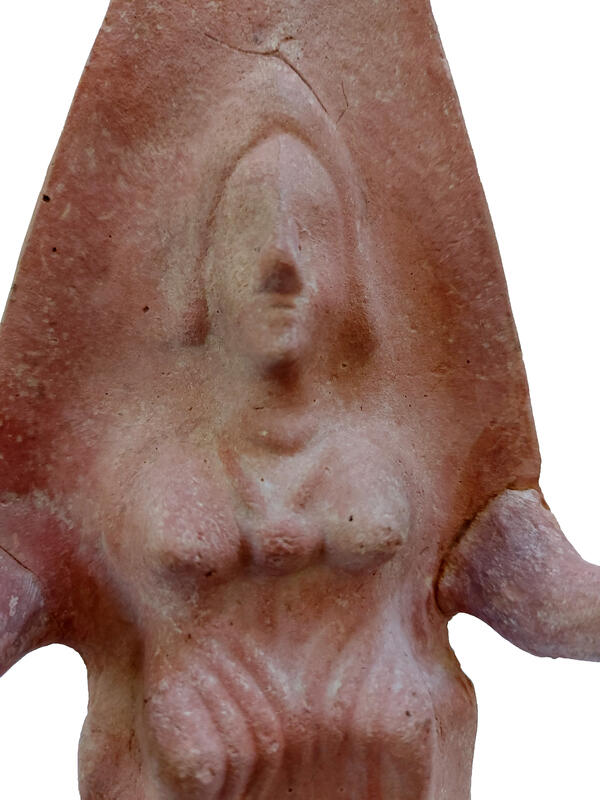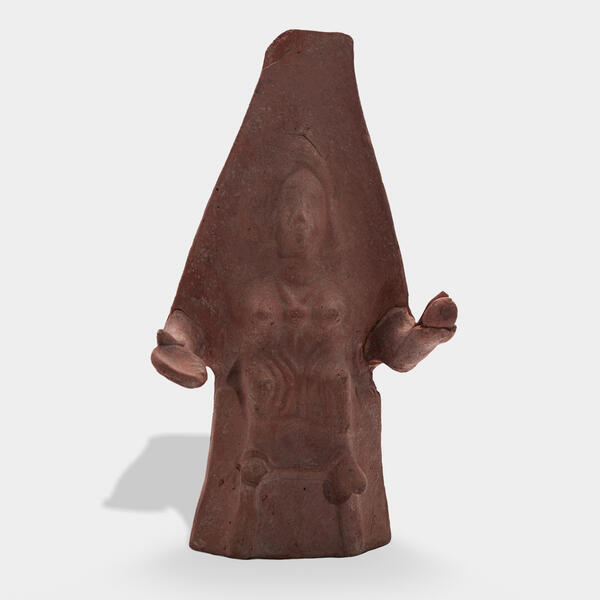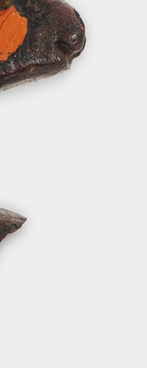The exhibition of the Tanais Archaeological Museum-Reserve displays a terracotta figurine found in a burial mound during archaeological excavations at the Tanais necropolis in 1990.
The burial was for a two-year-old child. In addition to the figurine, the grave featured earrings, a string of beads, and a goblet. The figurine represents a goddess sitting on a high throne, with her feet resting on a special platform. Her face is large with a prominent nose and a sharp, protruding chin. She also has sloping shoulders and a full chest. Her arms are spread out. She holds a bowl in her left hand and an egg in her right. The goddess wears a long chiton with a knee-long tunic falling in six folds on top of it. On her head, she wears a traditional calathus with a veil falling over her shoulders and reaching her elbows. There is also a necklace with a large, rounded decorative element in the center. The front of the figurine was made using a mold, while the back was hand-sculpted (traces of the joints and the craftsperson’s fingerprints are visible on the inside). The arms were attached to the body using small metal rods. The orange clay of fair solidity features small mica particles and is painted dark pink.
This type of Bosporan figurine is native to the
region and characteristic of it. The presence of a flatbread or bowl in the
hands of the goddess indicates that there was a special ritual or cult in those
days. The great mother goddess represented the supreme power that created, preserved,
and destroyed all that existed. She is an ancient deity of fertility and the
patroness of all life. Everything is in her power — birth, death, the cycles of
life and nature, the succession of generations, and the passing of time while
she herself is timeless. She also represents unconditional love and care for
all living things. She protects everyone, warms them with the home fire, and
nourishes and supplies them not only with material benefits but also with
spiritual wealth. During archaeological excavations, terracotta figurines of
the great mother goddess have been found in almost every Bosporan city.




